
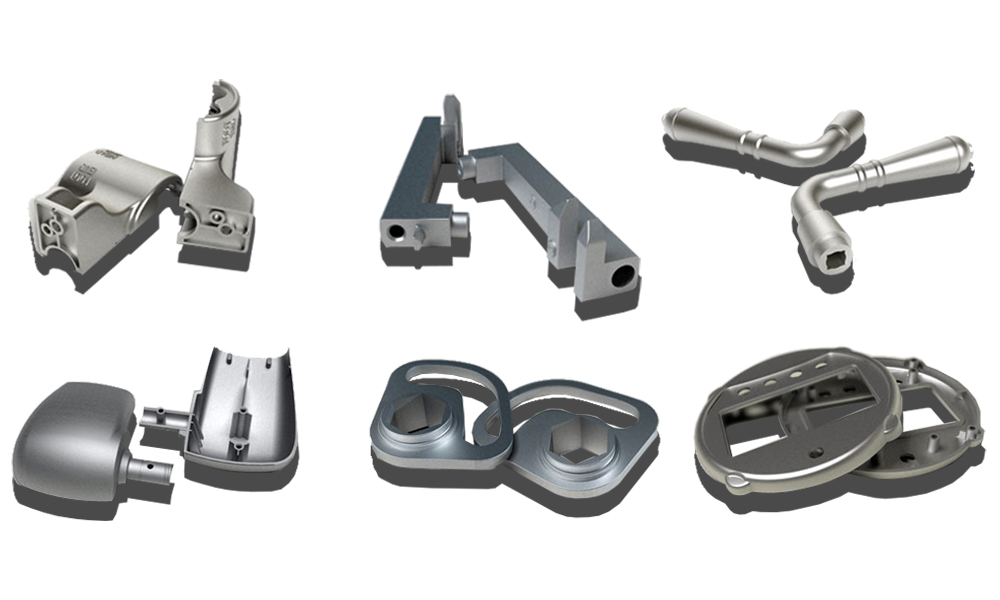
The deburring process involves removing burrs, sharp edges, and excess material from the zinc die-cast parts. Burrs can be caused by the metal flowing into the mold during the die-casting process.
The vibratory tumbling machine is filled with suitable abrasive media, such as ceramic or plastic media. Ceramic media is often preferred for its high cutting efficiency.
The machine is then operated at an appropriate speed and amplitude to agitate the media and parts together. The continuous rubbing and impact of the media against the parts help to remove the burrs.
The duration of the deburring process can vary depending on the size and complexity of the parts, as well as the severity of the burrs. Regular inspection of the parts during the process ensures that the desired deburring level is achieved.
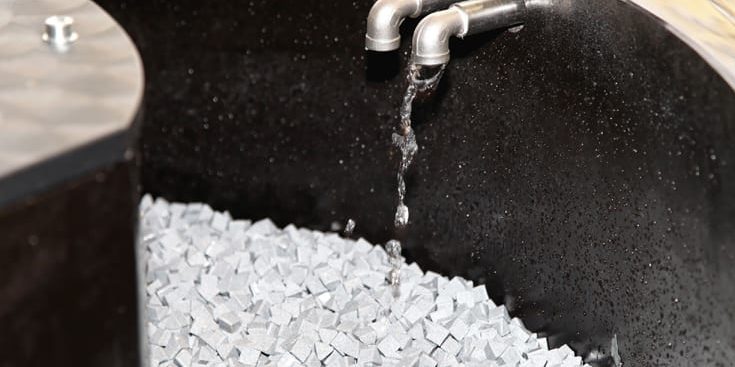
After deburring, the next step is to smooth out the surface of the zinc die-cast parts.
Plastic or ceramic media with finer abrasive properties, such as performed pyramids or cones, are commonly used for surface smoothing.
The machine parameters, including speed, amplitude, and cycle time, are adjusted to achieve the desired level of surface refinement. The process is typically conducted in multiple stages, gradually reducing the abrasive media size to achieve smoother surfaces.
Additionally, a compound or lubricant can be added to the vibratory finishing bowl to improve the cutting action and lubricate the parts, further enhancing the surface smoothing process.
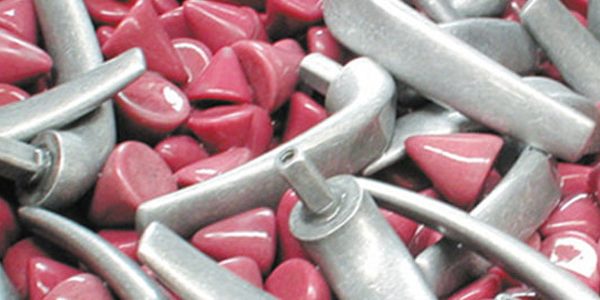
The brightening step aims to achieve a brighter, more reflective finish on the zinc die-cast parts.
Specialized polishing media, such as porcelain or plastic media impregnated with polishing compounds, is utilized for this purpose.
The polishing media, along with the appropriate polishing compound, gently abrades the surface of the parts, removing any remaining imperfections and enhancing the surface's brightness.
The polishing process is typically carried out at lower machine speeds and amplitudes to avoid excessive material removal or damage to the parts.
It is important to periodically check the progress and adjust the process parameters as needed to achieve the desired level of brightness.
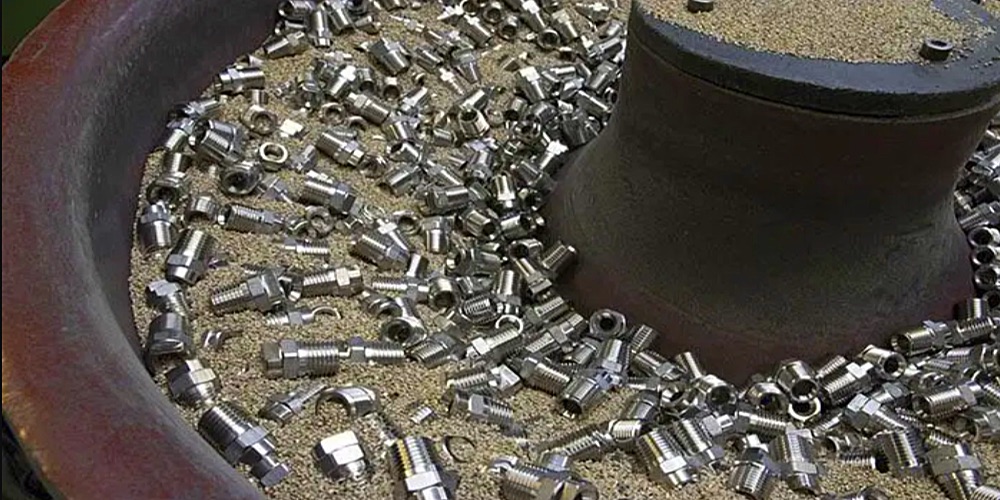
Depending on the specific requirements and desired finish, additional steps can be incorporated into the process.
For a high-gloss finish, a final polishing stage can be performed using very fine polishing media, such as porcelain balls or plastic cones. This stage helps to further refine the surface and enhance the reflectivity.
If a specific surface texture or grain pattern is desired, different media shapes, sizes, or compositions can be used to achieve the desired effect. Experimentation and sample testing may be required to achieve the desired outcome.
The selection of the appropriate abrasive media, compounds, and process parameters depends on factors such as the size, shape, and complexity of the zinc die-cast parts, as well as the desired surface finish.
The machine speed, amplitude, and cycle time can vary depending on the specific requirements and the type of media being used. It is important to strike a balance between effective material removal and avoiding excessive wear or damage to the parts.
Regular inspection of the parts during the process helps to ensure that the desired deburring, surface smoothing, and brightness levels are achieved without over-polishing.
Cleaning and drying steps should be included after the polishing process to remove any residual polishing compounds or media particles from the finished parts, ensuring a clean, final product.
2.2 Equipment Considerations:
The vibratory finishing bowl machine should have adjustable speed and amplitude settings to accommodate different parts and achieve optimal processing conditions.
The machine's capacity and size should be suitable for the size and quantity of zinc die-cast parts being processed. It's important to avoid overcrowding the machine, as this can impact the effectiveness of the polishing process.
The machine should be equipped with a robust, wear-resistant lining or lining media to ensure durability and prevent contamination of the parts during the polishing process.
Ceramic media: Ceramic media, such as angle-cut triangles or tetrahedrons, is commonly used for deburring zinc die-castings due to its high cutting efficiency. It provides effective burr removal while minimizing the risk of part damage.
Plastic media: Plastic media, such as cones, pyramids, or cylindrical shapes, is suitable for surface smoothing and brightening stages. It offers gentler abrasion, reducing the risk of part deformation or marring.
Porcelain media: Porcelain media, such as balls or cones, is commonly used for the final polishing stage to achieve a high-gloss finish on zinc die-cast parts. It provides a fine abrasion action for optimal surface refinement.
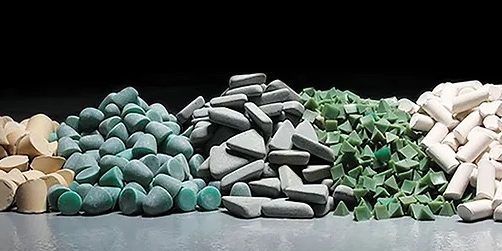
Compounds can be added to the vibratory finishing bowl to enhance the polishing process. They improve lubrication, cutting action, and brightness.
For deburring, a compound with high cleaning and cutting properties can be used to facilitate the removal of burrs and surface imperfections.
For surface smoothing and brightening, compounds with fine abrasives or polishing agents are preferred to refine the surface and enhance brightness.
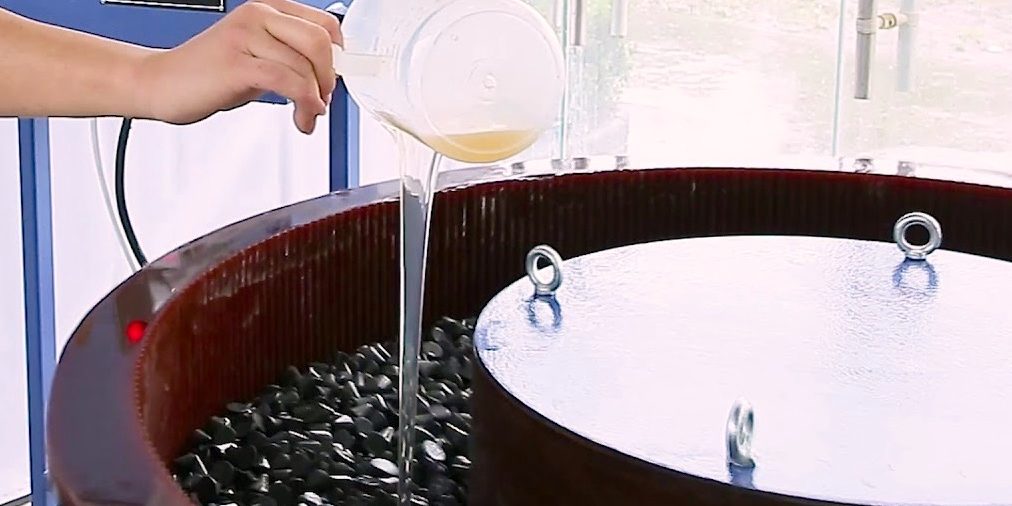
It's essential to conduct sample testing and process optimization to determine the optimal combination of media, compounds, machine parameters, and process duration for achieving the desired finish on zinc die-castings.
Regular monitoring of the parts during the process helps ensure consistent quality and prevents over-polishing or damage.
The use of appropriate rinsing and drying methods after the polishing process helps remove any residual compounds or media particles, resulting in clean and finished parts.
By considering these technical details, you can optimize the vibratory finishing process for polishing zinc die-castings, achieving the desired surface finish while maintaining the integrity of the parts.